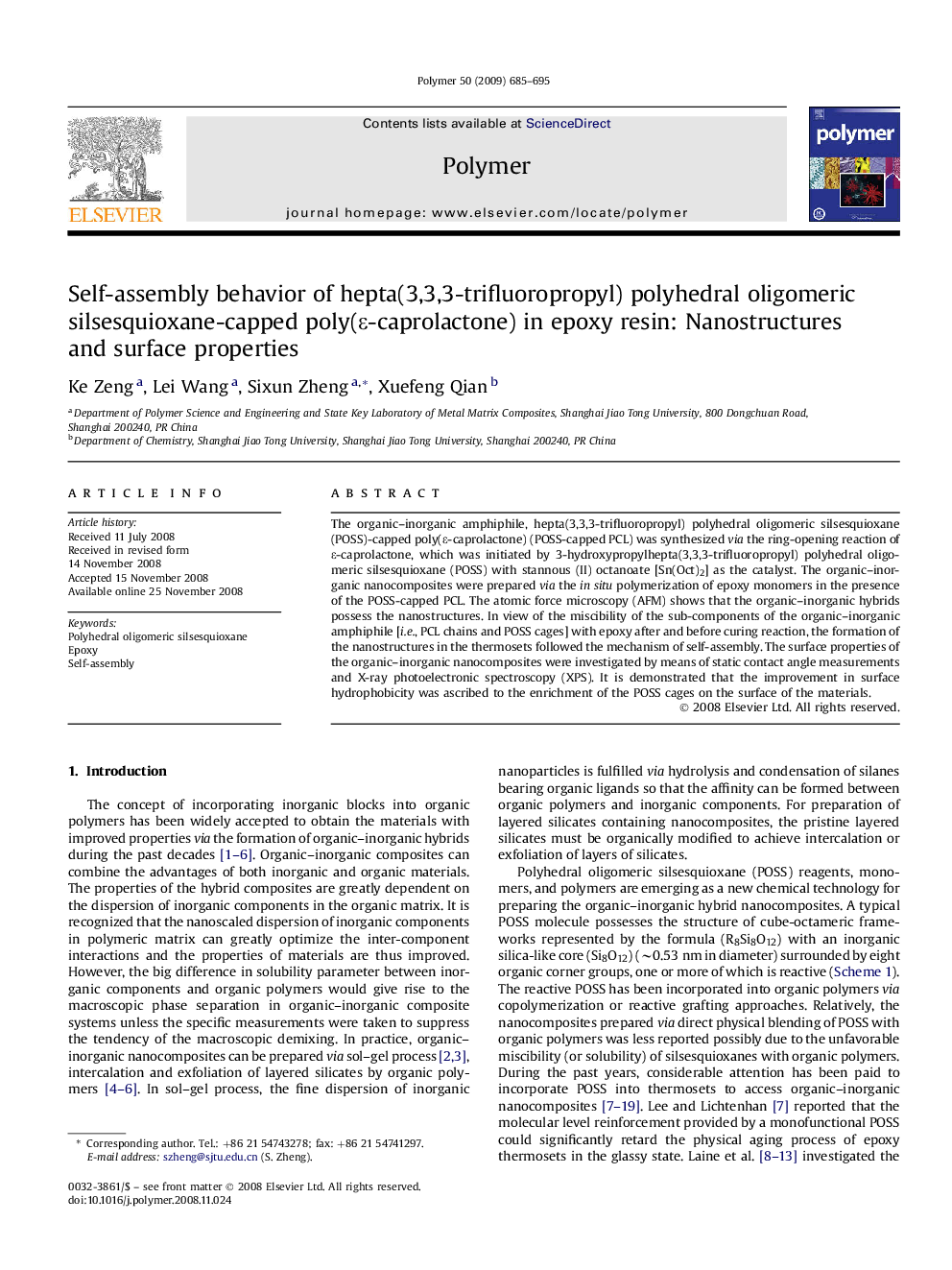| Article ID | Journal | Published Year | Pages | File Type |
|---|---|---|---|---|
| 5185415 | Polymer | 2009 | 11 Pages |
The organic-inorganic amphiphile, hepta(3,3,3-trifluoropropyl) polyhedral oligomeric silsesquioxane (POSS)-capped poly(É-caprolactone) (POSS-capped PCL) was synthesized via the ring-opening reaction of É-caprolactone, which was initiated by 3-hydroxypropylhepta(3,3,3-trifluoropropyl) polyhedral oligomeric silsesquioxane (POSS) with stannous (II) octanoate [Sn(Oct)2] as the catalyst. The organic-inorganic nanocomposites were prepared via the in situ polymerization of epoxy monomers in the presence of the POSS-capped PCL. The atomic force microscopy (AFM) shows that the organic-inorganic hybrids possess the nanostructures. In view of the miscibility of the sub-components of the organic-inorganic amphiphile [i.e., PCL chains and POSS cages] with epoxy after and before curing reaction, the formation of the nanostructures in the thermosets followed the mechanism of self-assembly. The surface properties of the organic-inorganic nanocomposites were investigated by means of static contact angle measurements and X-ray photoelectronic spectroscopy (XPS). It is demonstrated that the improvement in surface hydrophobicity was ascribed to the enrichment of the POSS cages on the surface of the materials.
Graphical abstractDownload full-size image
